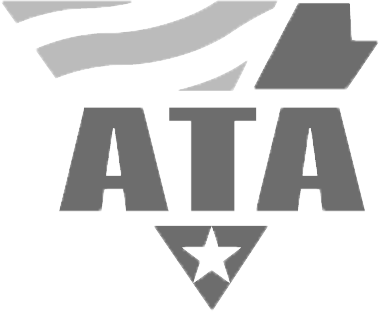Understanding the Annual Roadcheck Inspection Blitz
Every year, commercial vehicle inspectors across North America conduct a high-volume, intensive inspection period known as the International Roadcheck. This 72-hour event is organized by the Commercial Vehicle Safety Alliance (CVSA) and involves thousands of inspections focusing on different aspects each year, typically driver and vehicle compliance. The goal is to improve safety on roadways by identifying and addressing critical safety violations.
During the Roadcheck blitz, inspectors are stationed at weigh stations, inspection sites, and along roadways, performing thorough checks. These inspections can range from Level I (comprehensive driver and vehicle inspection) to Level III (driver-only inspection). The increased scrutiny means that any non-compliant vehicle or driver is likely to be discovered and potentially placed out of service.
The Direct Impact How Inspections Reduce Trucking Capacity
The most immediate effect of the Roadcheck inspection is the reduction in available trucking capacity. When a truck or driver is found to have critical violations, they are often placed out of service. This means the vehicle cannot be operated or the driver cannot drive until the violation is corrected. Common violations leading to out-of-service orders include issues with:
- Brakes and brake systems
- Tires and wheels
- Lights
- Hours of Service documentation
- Driver’s licenses and medical certificates
With a significant number of trucks and drivers temporarily sidelined across the continent, the overall capacity within the freight market decreases. This sudden drop in available trucks and drivers creates a supply constraint, which inevitably affects pricing.
Roadcheck Inspection Impact Trucking Spot Rates Explained
The fundamental principle of supply and demand is heavily at play when considering the Roadcheck inspection impact trucking spot rates. The spot market operates on real-time availability and immediate needs. When the supply of available trucks shrinks due to inspections and out-of-service orders, while demand for freight movement remains constant or even increases, the price for that reduced capacity goes up. This is precisely why the Roadcheck inspection impact trucking spot rates is often a noticeable phenomenon in the days leading up to and during the event.
Carriers who have well-maintained equipment and compliant drivers are less likely to be impacted by out-of-service orders during Roadcheck. This allows them to continue operating when others cannot, potentially benefiting from the higher rates in the spot market. Conversely, carriers with compliance issues face lost revenue from sidelined assets and the potential cost of penalties and repairs.
Examining the Effect on the Current Spot Market Landscape
The current spot market landscape, influenced by various economic factors, can either amplify or slightly buffer the effects of Roadcheck. In a period of already tight capacity, the Roadcheck blitz can significantly exacerbate the situation, leading to sharper spikes in spot rates. If the market is experiencing softer demand and looser capacity, the impact on rates might be less dramatic, but still present, particularly in specific lanes or regions where inspection activity is high.
Freight brokers and shippers closely monitor Roadcheck dates and anticipate the potential capacity crunch and subsequent rate increases. Planning ahead and securing capacity before the inspection period is a common strategy to mitigate the impact of the Roadcheck inspection on trucking spot rates.
Understanding market dynamics is crucial. For instance, fluctuations in US trucking activity, as discussed in articles like Understanding the Recent Decline in US Trucking Activity, can influence how pronounced the Roadcheck effect is in any given year.
Strategies for Carriers to Minimize Roadcheck Disruption
For carriers, minimizing the disruption caused by Roadcheck is paramount. The most effective strategy is proactive and continuous compliance. This involves several key areas:
- Vehicle Maintenance: Regularly scheduled preventative maintenance is crucial. Addressing potential issues before they become violations is far more cost-effective than dealing with out-of-service repairs. Carriers like Apex Transit maintain an on-site shop with 24-hour mechanics to ensure equipment is always above standard.
- Driver Training and Education: Ensuring drivers are knowledgeable about pre-trip and post-trip inspection procedures, Hours of Service regulations, and required documentation is vital. Well-trained drivers are less likely to commit violations.
- Documentation Accuracy: Proper and up-to-date driver logs (ELDs), vehicle registrations, insurance, and medical certificates are essential. Technology like Samsara ELD and LoadStop TMS helps maintain accurate records.
- Pre-Roadcheck Inspections: Conducting thorough internal inspections of the fleet in the weeks leading up to Roadcheck can identify and fix potential issues proactively.
By focusing on these areas, carriers not only minimize their risk during Roadcheck but also operate a safer, more reliable fleet year-round. This commitment to safety and compliance is a differentiator in the market.
Preparing for Roadcheck and Its Market Ramifications
Both carriers and shippers need to prepare for the annual Roadcheck. Carriers should focus on the strategies mentioned above to ensure their fleet and drivers are inspection-ready. This preparedness reduces the likelihood of being placed out of service, maintaining capacity and the ability to capitalize on market shifts.
Shippers should work closely with their carrier partners to understand their Roadcheck preparedness. Exploring different capacity models, such as the trucking asset-brokerage hybrid model discussed in Key Benefits of the Trucking Asset-Brokerage Hybrid Model, can offer more resilient solutions during periods of market volatility influenced by events like Roadcheck.
The CVSA website is an excellent resource for detailed information on the annual Roadcheck, including the specific focus area for the upcoming year and inspection procedures. Additionally, keeping abreast of economic trends impacting trucking, such as those reported by industry analysts like ACT Research, provides a broader context for the Roadcheck inspection impact trucking spot rates.
In conclusion, the Roadcheck inspection is a critical safety initiative that also has a predictable effect on the trucking market, specifically on spot rates. By understanding its impact and focusing on robust safety and compliance programs, carriers and shippers can navigate this annual event more effectively.
Have questions? Contact us here.














